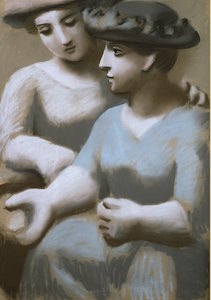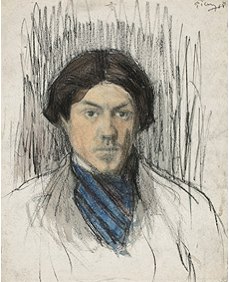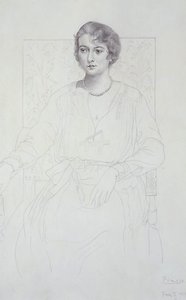Picasso's Drawings at the Frick Collection
- Category: On Our Radar
- Published: Tuesday, 04 October 2011 22:02
 It’s the season for fall openings at New York’s museums and an exceptional exhibit of Picasso’s early drawings is now on display at the Frick Collection. The show is titled, “Picasso’s Drawings, 1890-1921: Reinventing Tradition,” and it offers a unique opportunity to gain an understanding of the roots of Picasso’s genius.
It’s the season for fall openings at New York’s museums and an exceptional exhibit of Picasso’s early drawings is now on display at the Frick Collection. The show is titled, “Picasso’s Drawings, 1890-1921: Reinventing Tradition,” and it offers a unique opportunity to gain an understanding of the roots of Picasso’s genius.
On display are Picasso’s earliest works including some pieces from private collections that have never been on view before. Curators have assembled this exhibition by borrowing from diverse sources including the Musee Picasso in Barcelona, the National Gallery in Washington and the Foundation Beyeler in Basel.
The sequence of the exhibit traces Picasso’s development from a classical master draftsman to the leading force in the modern art movement. The son of Jose Ruiz Blaso, a drawing instructor and provincial painter, Picasso started to draw at a very young age. At sixteen Picasso entered the Real Academia de Belles Arts de San Fernando in Madrid and a charcoal and black pencil drawing of a torso from that time shows his knowledge of proportion, linear perspective and form. After a few months he felt had learned all he could there and left. He returned to Barcelona and the show includes a self portrait he did in 1901 at the age of 20 showing a searching young man. In 1904 he moved to Paris, and many of the drawings in the show date from that era. On view are colorful and bold drawings that were the studies for Picasso’s “Les Demoiselles D’Avignon,” with brash brush strokes that were a departure from traditional techniques. One of the pleasures of looking at drawings rather than paintings is that you can see the artist at work; and in these studies Picasso played with the position of hands and feet, or the depiction of a head in profile or from behind.
As he developed he moved away from his classical training and started to play with form, decomposing his subjects into sleek planes and  sharp angles. From 1909- 1914 he worked closely with Georges Braque and the exhibit includes several still lifes and an innovative collage, Composition with a Violin, done by Picasso that closely resembles Braque’s work. Picasso’s embrace of cubism is evident in his fractured charcoal drawings where the viewer looks hard to locate a stray foot or an eye in an effort to re-assemble the subject of the drawing.
sharp angles. From 1909- 1914 he worked closely with Georges Braque and the exhibit includes several still lifes and an innovative collage, Composition with a Violin, done by Picasso that closely resembles Braque’s work. Picasso’s embrace of cubism is evident in his fractured charcoal drawings where the viewer looks hard to locate a stray foot or an eye in an effort to re-assemble the subject of the drawing.
Also on view are more classical portraits by Picasso of some of the era’s leading luminaries – including Stravinsky, and the art dealer Ambroise Vollard who gave Picasso his first one-man show.
Upstairs, there are several super-sized pastels of women that Picasso created during a summer in Fontainebleau in 1921 including “Woman with Flowered Hat” and the dramatic “Head of a Woman.” In these larger-than-life works, Picasso experimented with scale and monumentality and the drawings dwarf the small room in which they are hung. Don’t miss them on your way out.
Also take a few minutes to explore the Frick, originally a private mansion built in 1913-14 that spans an entire block of Fifth Avenue. The mansion was designed by architects Carrere and Hastings who also designed the New York Public Library. The beautiful interior courtyard surrounds a fountain as does the elegant exterior garden.
 The Frick Collection
The Frick Collection
10 East 71st Street
New York, N.Y. 10021
To purchase tickets online, visit: http://www.frick.org/exhibitions/picasso/







